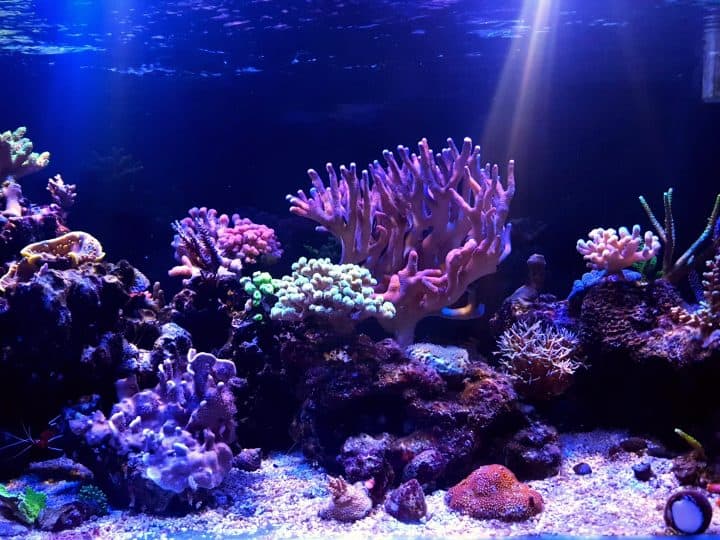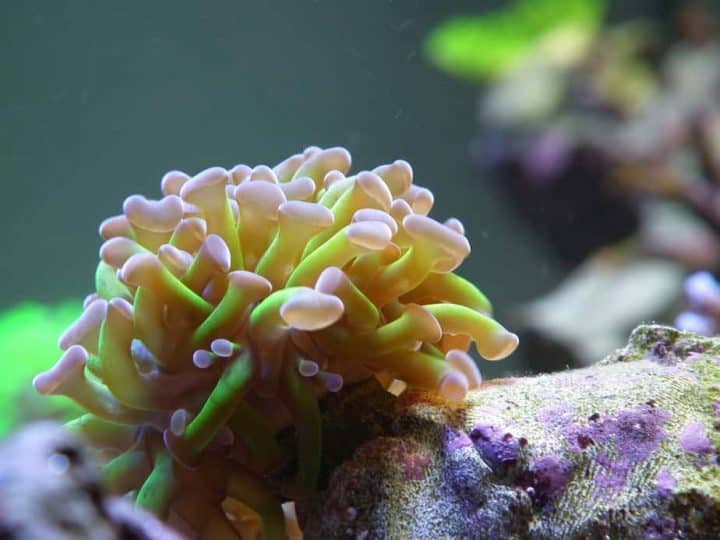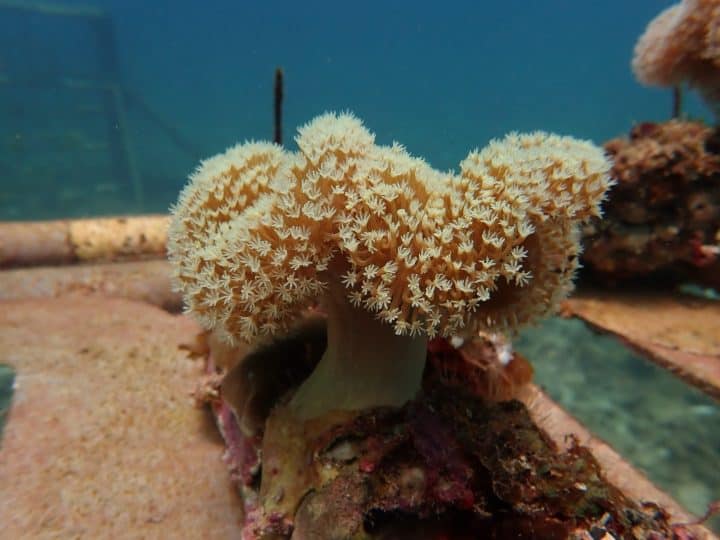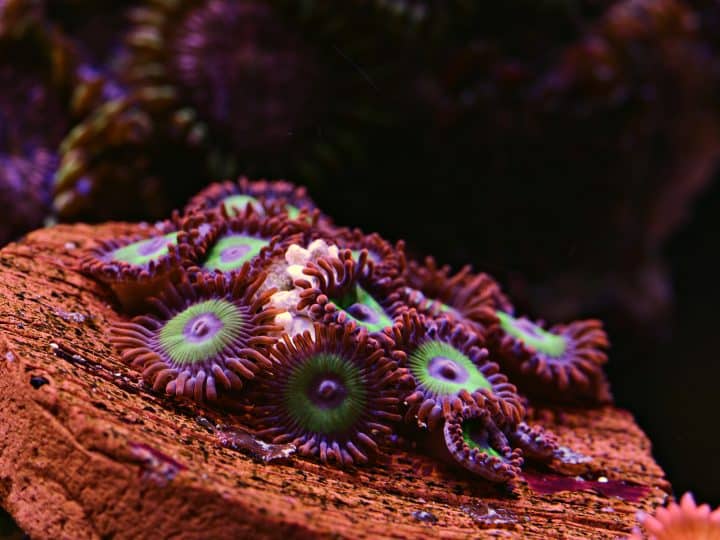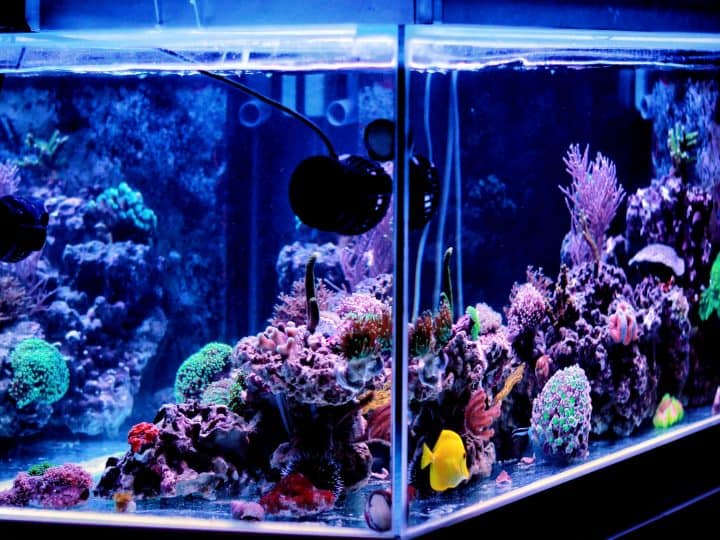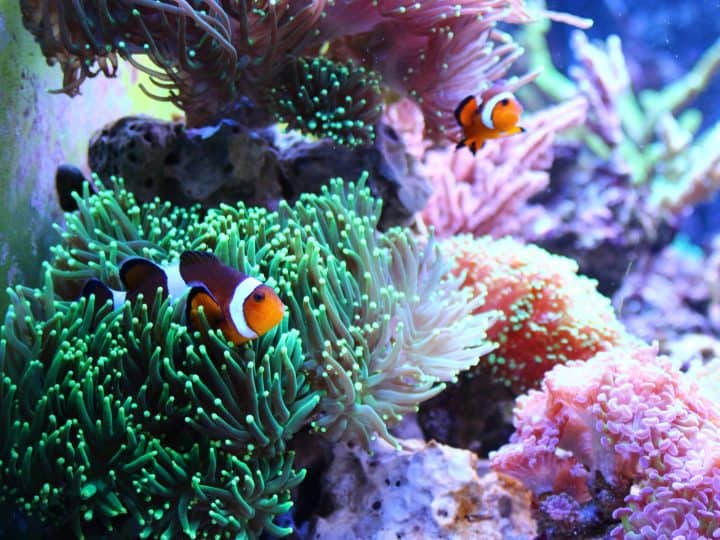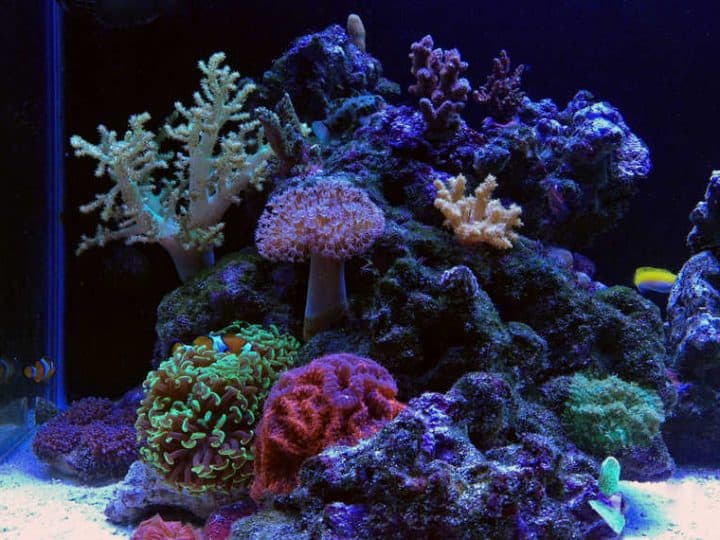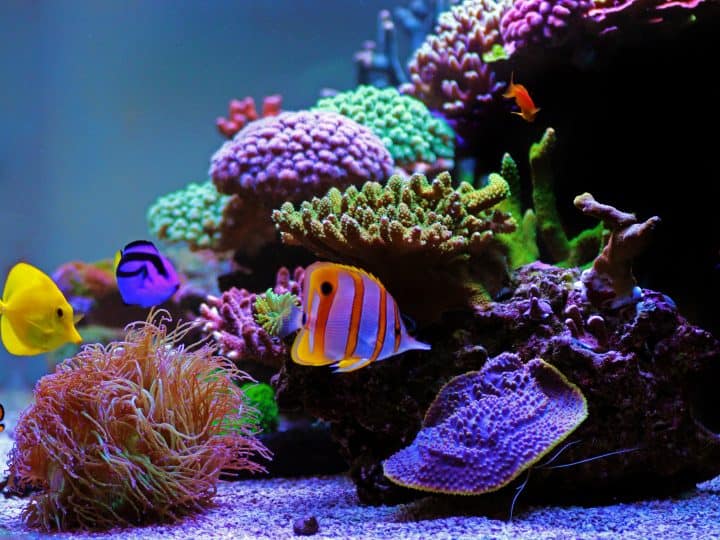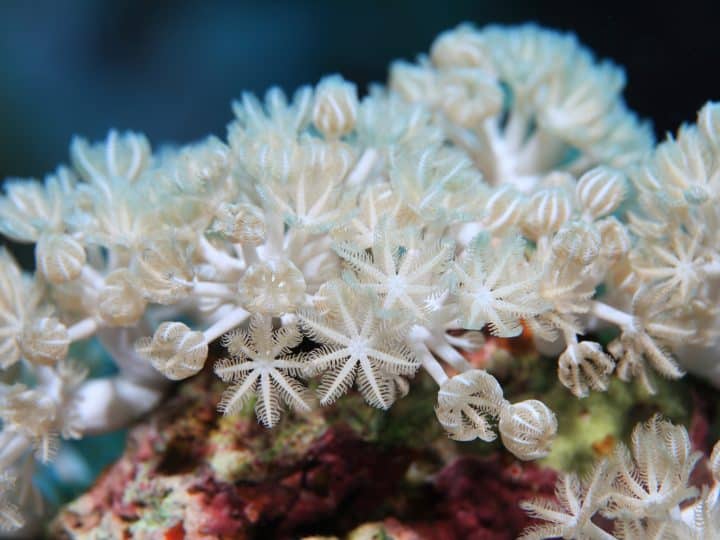Observing the salt level in the tank is one of the little things that distinguish the owners of luxurious and healthy aquariums from the keepers of half-dead and discolored display tanks. This is the behind-the-scenes article that reveals every aspect of salinity.
Quick Answer
In a reef aquarium, the salinity should be maintained at 33-35%ₒ. It is important to consider the needs of your particular corals though. If they originate from tropical waters, you can keep the salinity around 38%, for corals from inland seas — around 32%
Salinity is calculated in grams per kilogram of water, or parts per thousand (ppt). One-thousandth of a percent is called a ppm and is denoted by %ₒ.
What is the Best Salinity for Aquarium?
In the world’s oceans, the average salinity of the water is about 34.7%. In tropical waters, it is even more — 35,2%. It should be taken into account that the ocean’s surface layers of water have more subtle salinity due to atmospheric precipitations. Stick to the thumb rule: deep-water corals require more saline water than those growing within lagoons, near the coast.
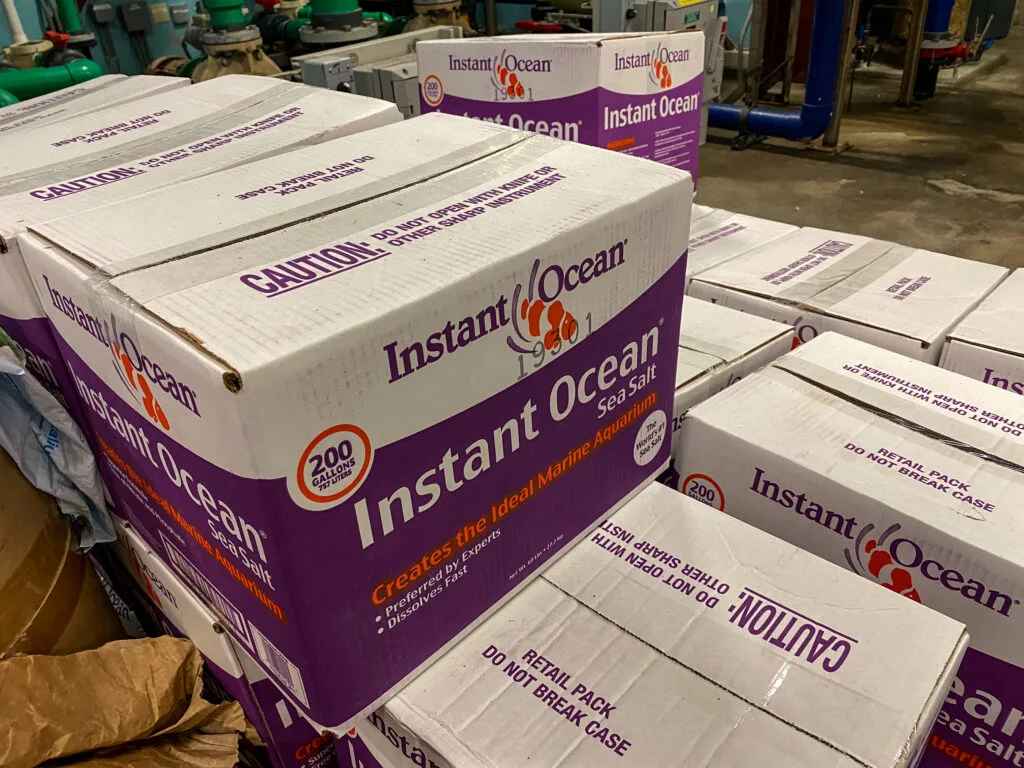
The most abundant and diverse forms of coral communities are found in the inner seas of the Indian Ocean (for example, in the South China Sea, between the Philippines and the Sunda Islands), where the salinity of the seawater reaches the lowest values — up to 32%. And at the same time incredibly rich in coral reefs in the Red Sea, where the value of salinity stretches to 40%ₒ.
You can find a convenient salinity calculator here. It converts between various units of salinity.
What Do Experts Think about Salinity for a Reef Tank?
I talked to several professionals working at coral stores, and here’s what they think about water salinity levels.
Mike, Enthusiast reef-keeper since 2017
I stick to 1.025 for my mixed tank (do not have any fish though). As far as I know, there is no such a term as “best salinity” per se. Because every coral is unique. Some of them come from brackish water, others lived in the Red Sea. Always choose nature over technology. Mind-blowing, complicated theories fade into the background… First of all, corals are living creatures: treat them the same way nature does.
Matthew, Sells coral for 11 years now.
I’m not sure whether it’s best, but 1.026 worked perfectly for almost 10 years in my fish aquarium. Recently I’ve added a couple of frags (leather and green star). No problems with salinity so far. Corals and fish seem quite satisfied and healthy.
Corey, Youngster aquarists, pro tech geek
The normal salinity level for a reef aquarium is around 35 ‰ and there is no debate about it. Take it or leave it! Do not forget that due to evaporation, the water level in the aquarium gradually decreases, and the salinity will increase. It’s most natural to mark the initial water level in the aquarium and top it up with water obtained by osmosis and filtered. Never pour salt directly into the aquarium or sump.
How to Determine the Salinity of Tank Water
To determine the salinity of the water in the reef aquarium, you can measure the specific conductivity or density of seawater. The most common tool to measure water’s density is a hydrometer. The measuring unit is grams per milliliter (g/ml).
A hydrometer is immersed into an aquarium (with a turned-off circulation), or into a separate container. Then numbers are taken from the hydrometer by the lower division of the meniscus.
The density should be measured immediately after the hydrometer is filled with reef water because evaporation is constant, and this will also make the data incorrect. After you have finished measuring, rinse the hydrometer with warm tap water. Do not leave the glass hydrometer in the aquarium or sump!
Tips for Using the Hydrometer
Don’t hesitate to ask a salesman for a quick test upon purchase. This simple procedure may prevent miscalculations in your future measurements. If you want to check the device’s accuracy at home, place it in a tank of distilled water at 15 or 25 degrees Celsius. If it indicates lower or higher than 1,000, just remember what the difference is. Let’s say the hydrometer registered a value of 0.999, therefore you should add 0.001 to this value each time you measure the salinity of the water in the aquarium (with a value of 1.023 you should consider the number 1.024 to be correct).
The vast majority of laboratory hydrometers are calibrated to a temperature of 59°F (15°C). Reef-keeping devices are calibrated at 77°F (25°C ). But those made in the U.S are calibrated at 75°F. Ideally, calibration temperature should coincide with the display tank’s water. The necessary calibration information is always indicated on the label.
Alternative ways to measure salinity if a reef tank
A more accurate method of measuring water salinity is to measure the specific conductivity of water. It is based on a phenomenon called conductivity. The unit of measure for conductivity is siemens (S/cm), but its derivatives, micro siemens per centimeter (µS/cm) and milli siemens per centimeter (mS/cm) are more commonly used in practice. 1 S/cm = 1000 mS/cm = 1000000 µS/cm If the temperature of seawater is 25°C, the conductivity is between 45 and 48 mS/cm. The most accurate and reliable method of maintaining salinity is the osmolator. Electrical circuits of an osmolator can compensate for salinity drops while metering pump control operations (e.g. Conductivity Meter 7032 from Tunze, LF Controller 2001C from Aqua Medic, you can also find other meters here)
These meters can have a scale for conductivity measurements in seawater, brackish water, and freshwater. Before you buy such a device, you should make sure that the range of divisions on its scale corresponds to the conductivity values of seawater.
How Often Should You Measure the Water In a Saltwater Aquarium
Consider at least a weekly cadence for salinity check-ups. Especially if you have corals. Fish can tolerate small fluctuations (2-3%), but corals can’t. Of course, under natural conditions, corals that live in shallow lagoons or reef platforms are severely stressed by changes in salinity at low tide. But such conditions last for a limited time and disappear with the tide, which quickly brings the salinity back to normal.
But don’t take my word for granted. Let’s refer to mother nature’s experience. Biologists and marine scientists report about cases when prolonged tropical downpours have terminated large coral colonies because of water desalination. Corals also do not grow where seawater is heavily desalinated by runoff from rivers. For example, you won’t find a single coral along the entire South American coastline (nearly 4,000 kilometers). That’s because the water has poor salinity all the way (from Cape Cabo Branco to the Trinidadian Peninsula.
On top of that, another scientific report. According to Bornemann’s research, a rise in salinity for two weeks causes coral stress. That may lead to bleaching, diseases, or even tissue necrosis (death)
What Should You Do If Salinity Is High
To check in an appropriate level of salinity, consider adding some water. This should be done using a salinity control device. Always keep your water clean, reverse osmosis may help with that. Tap water is not suitable due to the significant amount of impurities that will cause miscalculations of salinity. The best way to stay protected is ion exchange resin MB-50. Use purified water mixed with the chemical salt concoction.
Another crux is evaporation. It’s advisable to reduce the intensity of water evaporation in the aquarium. Adjust the room temperature for that. Generally, water evaporates faster in hot rooms, or if exposed to direct sun.
What Kind of Water Should You Add to a Reef Aquarium?
Add fresh water to the aquarium to replace the evaporated water. However, filter it through ion exchange columns, reverse osmosis equipment, etc. This procedure is part of the regular maintenance of marine aquariums.
To avoid fluctuations in salinity, it’s advisable to note the water level in the aquarium, which was originally in it and fill it daily with small portions of freshwater. If the filtration system is located under the aquarium, the necessary water level should be maintained in a sump (drain tank), while the water level in the aquarium itself remains unchanged.
The easiest way to refill water is to place a container with fresh water passed through the osmosis system over the aquarium or biofilter, filling water through a drip tray.
A certain amount of concentrated salt solution can be removed together with the foam through the skimmer for the saltwater aquarium. Therefore, if you simply top up with fresh water without controlling the salinity level, it may drop to an unacceptable level of 31-32 ppm. In that case, the evaporated water must be replaced by salty water.
Tip: water level sensor makes maintenance almost effortless. The Sensor itself costs around $20 to $30 while the whole control system may cost around $100 to $200.

